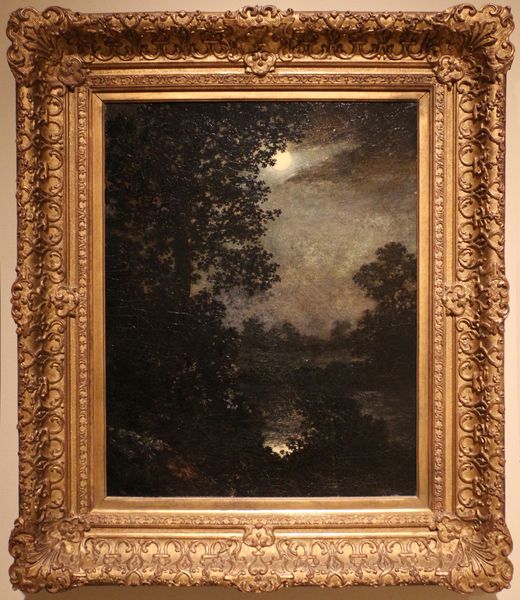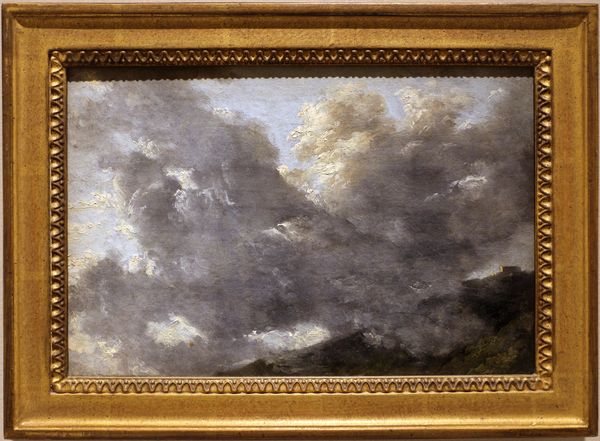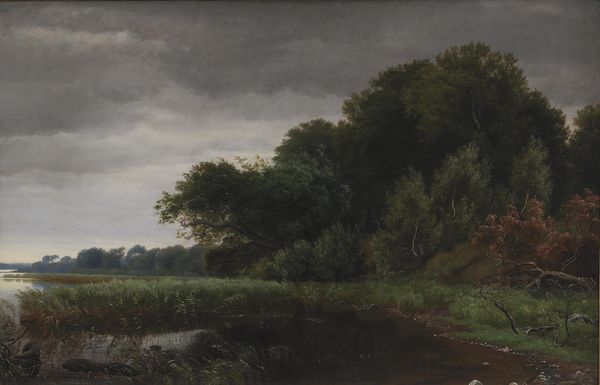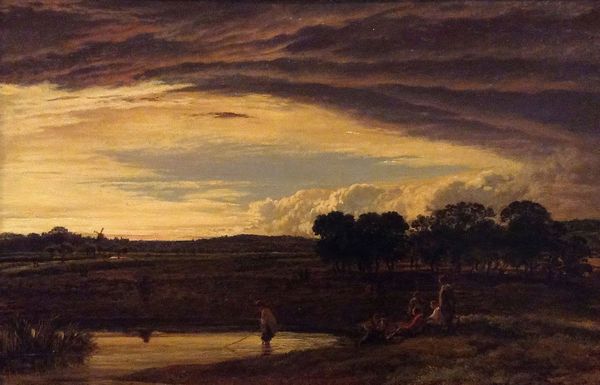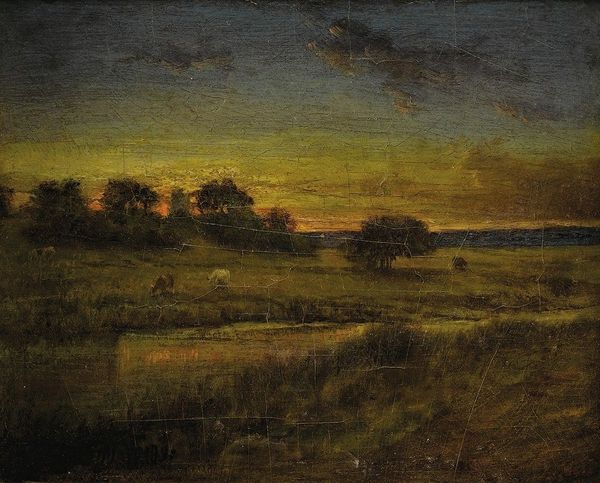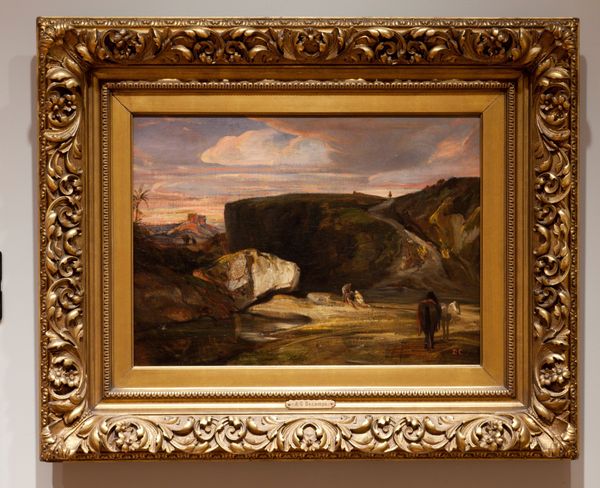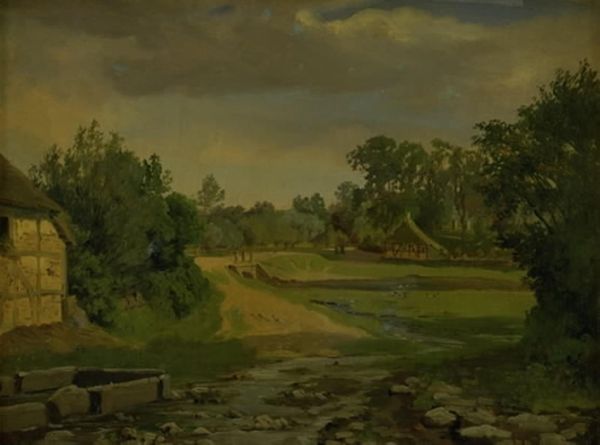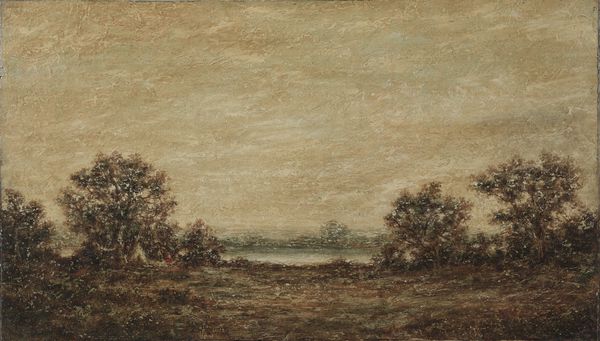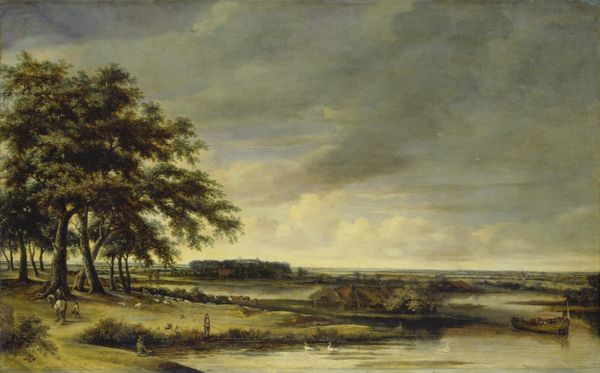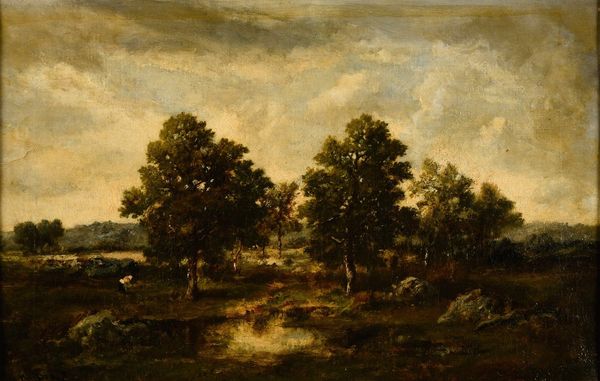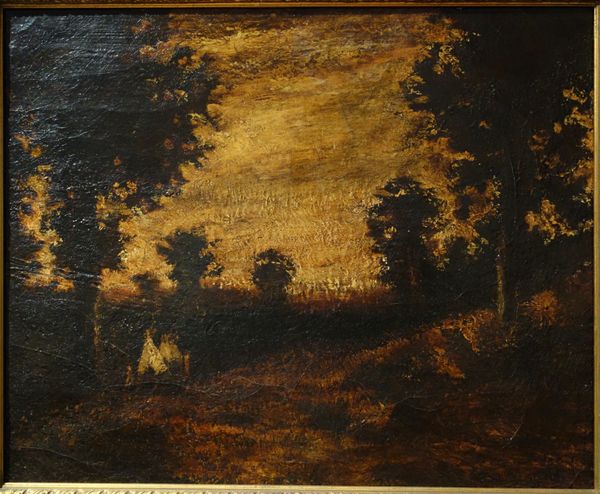
plein-air, oil-paint
#
plein-air
#
oil-paint
#
landscape
#
charcoal art
#
oil painting
#
england
#
romanticism
#
genre-painting
Dimensions: 14 7/8 x 22 1/2 in. (37.78 x 57.15 cm) (sight)21 1/2 x 29 in. (54.61 x 73.66 cm) (outer frame)
Copyright: Public Domain
John Linnell created this oil on canvas titled "Evening," which resides at the Minneapolis Institute of Art. At first glance, the composition evokes a sense of drama as the eye is pulled upwards, from the serene lower landscape to the tumultuous sky filled with dark, heavy clouds. Linnell's use of light and shadow isn't merely representational; it functions as a semiotic device, encoding deeper meanings. The contrast between the illuminated foreground and the brooding sky creates a visual dialectic, a conversation between tranquility and impending storm. The careful distribution of figures along the lower part of the painting is less about representing an idyllic scene and more about using human forms as anchors within the landscape, giving scale to the natural elements. Consider how Linnell destabilizes the traditional romantic landscape, which often celebrated the sublime harmony of nature. Here, the formal structure of the painting introduces conflict, using the visual language of light and shadow to question any easy sense of natural equilibrium. This creates an emotional tension, inviting viewers to contemplate themes of change and uncertainty.
Comments
minneapolisinstituteofart almost 2 years ago
⋮
John Linnell was one of the most successful and influential landscape painters active in Great Britain during the first half of the 19th century. Along with John Varley, he pioneered the regular practice of plein-air painting along the Thames and in the suburbs of London. The intensity and the poetic sublimity of this representation of naturalistic phenomena are typical of Linnell's most accomplished works. It is a view of nature that would resonate through the 19th century not only in the works of many British imitators but also in those of many American painters, in particular those affiliated with the British-born artist Thomas Cole, his protégé Frederic Church, and their circle of Transcendentalists.
Join the conversation
Join millions of artists and users on Artera today and experience the ultimate creative platform.
